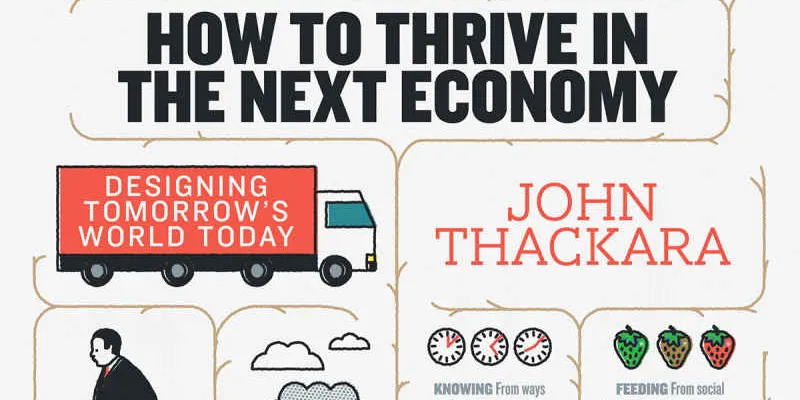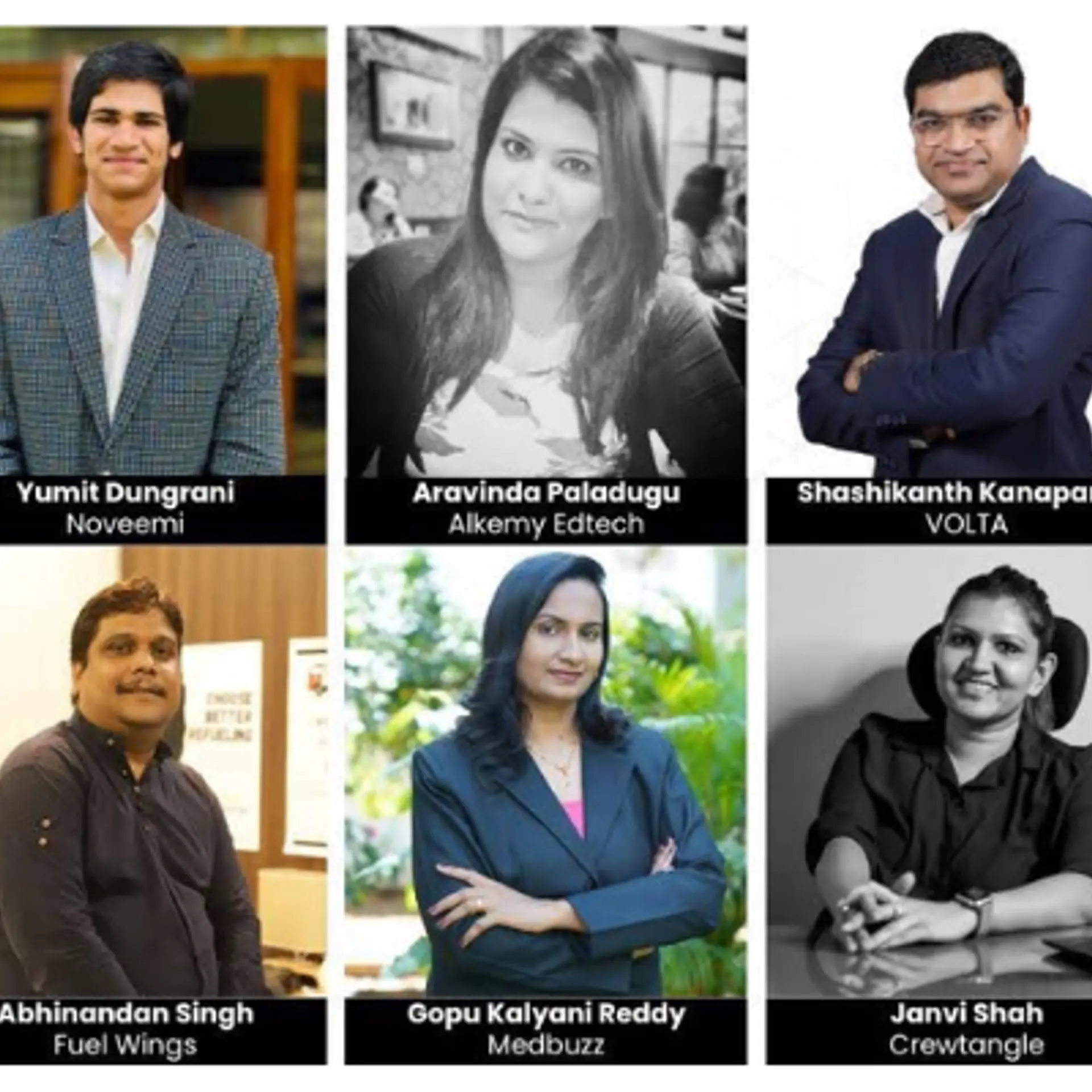Design for sustainability: 10 tips for success in the next economy
Economic models and business strategies based only on endless growth are doing irreparable damage to the environment and to the future generations of humanity. The answer lies not just in big technological solutions, but in the creativity, inclusion, and networking of grassroots communities around the world which are focused on biodiversity and ecology.

The need of the hour is the ‘replacement economy’ — one that nurtures the earth and its inhabitants, according to the new book How to Thrive in the Next Economy: Designing for Tomorrow’s World by John Thackara.
John is a global expert in environmentally-aware design, and director of the Netherlands Design Institute. He has organised a series of conferences called ‘Doors of Perception’ in Amsterdam and in India.
The material is thoroughly referenced and spread across 10 chapters. It ties together the work of diverse communities around the world: rain harvesters, urban farmers, park renewers, textile upcyclers, hardware remixers, energy angels, wind wizards, bio-regional planners, citizen foresters, and watershed managers. (See also my book review of Frugal Innovation, and photo essay on co-creation.)
The 192-page book provides a visionary yet practical guide to building a more sustainable future, powered by the vision and learnings of social entrepreneurs, activists, green designers, and hackers.
My key takeaways are summed up in Table 1, with more details in the individual chapters.
Table 1: Principles of design for sustainability
Value systems
A ‘green thread’ runs through our world, and humanity is co-dependent with nature. The Earth is not a repository of inert resources to be plundered, but is animated by complex interactions. To understand these interactions and build a better world, fundamental notions of energy, money, growth and risk need to be reframed.
Just increasing the number of ‘green certified’ products is not enough, since unbounded growth leads to destructive feedback loops and ecocide. A paradigm shift is needed to create post-materialistic thinking.
Soil and soul
“Healthy soil is itself a living system; a single shovelful of soil can contain more living things than all the human beings ever born,” says John. Microbe and insect networks constitute ‘nature’s Internet,’ according to mycologist Paul Stamets.
Nature has built its own cycle for sustainable grazing of grasslands, but industrial farming and synthetic fertilisers have caused immense damage to the living soil. Land and forest need to be addressed as a ‘bio-region,’ and not just according to national boundaries.
It is also important to address ‘edge habitats’ such as hedges, ditches, and roadway dividers. Urban planners should factor in ‘biological capital’ in their cities, and not just roadways and parking lots. Growth should include ‘soil and soul’ metrics of land and water getting healthier, and ‘systems thinking’ approaches should be augmented by ‘systems feeling.’ We need not just a ‘green revolution’ but also a ‘brown revolution’ in soil improvement.
Living water
Water itself is a living social and ecological system, and not just something that flows out of a tap. Urbanisation has destroyed much of the traditional networks of tanks, ponds, streams and canals, and created impervious surface areas.
“In India, they say that rivers are the birthplaces of civilisation – and civilisation the graveyard for rivers,” John explains. The need of the hour is water-sensitive urban design to make cities ‘water-wise.’ Rainwater tanks and smart sensors for flow monitoring will help at the residential and city level.
The Watershed Management Group offers Water Harvesting Design Certificates to train planners, architects, landscapers and community organisers. The movement called The Ugly Indian, started by design students in Bengaluru, cleans up trash-covered sidewalks and illegal rubbish dumps; it is now present in over a dozen cities. The Aqualon Project in Germany maps regional bio-diversity and production, and finds ways to regenerate the environment.
Some cities are active in ‘river recovery,’ such as Seoul, which removed a major highway to uncover the Cheonggyecheon River. Other cities like Bengaluru and Mexico City have a lot of catching up to do. At a minimum, neighbourhoods should have their own cisterns to capture rainwater.
Urbanisation
The ‘real estate industrial complex’ is advancing at the cost of parks, wetlands, native landscapes, and bio-conduits; some amount of concrete and paved land in over-developed cities needs to be converted into parks. In many cities, a ‘decon boom’ is leading to ‘re-wilding cities’ via a combination of wide open spaces and patchworks, mosaics and archipelagos of ‘green lungs.’
Books like The Diggable City advocate the rise of community gardens and informal food networks. Suburban networks need to be formed to create a semi-agrarian web of communities for localised food self-sufficiency. Natural ‘bio-remediation’ can involve the use of plants to clean up polluted soils.
Parks in the UK are being connected via ‘pollinator pathways’ (‘bee roads’) or green strips to provide conduits and habitats for insects. TreePeople in Los Angeles provides fruit trees for low-income neighbourhoods, supported by Tree Care Coordinators. Such ‘DIY urbanism’ initiatives help create a larger ecological consciousness.
Valuable lessons on the regenerative economy are also offered by traditional communities in Asia, Africa, and Latin America. “I’ve realised that people who are poor in material terms are highly accomplished at the creation of value in ways that do not destroy natural and human assets,” explains John. For example, 40 per cent of households in Sub-Saharan cities are urban farmers; and the wisdom of farmers in Bali on terrace farming practices turned out to be better than advice from the Asian Development Bank.
Food
Large-scale production of industrial crops like soya bean, sugar cane and oil palm are having adverse affects in countries like India, Kenya, and Brazil. Global refrigerated cold-chains are creating a network of ‘distributed winter’ at a high energy cost.
These ‘Big Ag’ impacts can be minimised to some extent by practices like urban farming and city+farmer community partnerships for collective buying and planning, such as La Ruche in France and The Food Assembly. Agri-tourism can increase awareness about such practices and bring people closer to nature.
New micro-breweries in Colorado are turning their by-products into feed for fish instead of dumping them as waste. London citizens grow hops in their gardens and balconies for local brewers of the Brixton Beer Project.
Clothing
A number of organisations and industry lobbies are promoting cloth factory operations that are not just cheap via outsourcing, but ethical, and sustainable. Energy use, waste, and toxic outputs need to be factored in while assessing impacts of the fabric and leather industry.
Bio-regional fibresheds can connect local players for vertical integration. “Clean production is at heart a social process, not just a technical one,” says Mansi Gupta, a designer in Indian leather hub Kanpur, who has released a short film on the local leather industry.
Maker networks like Ravelry are creating a local community of crafters and weavers; there is also a platform to coordinate everything from inventory to micro-transactions.
Travel and tourism
Unchecked mobility is also damaging our biosphere. Needs of reducing commute times should also be balanced with energy and environmental costs of construction and parking facilities. Support for pedestrians and cyclists should be increased as well.
CycleLogistics promotes package delivery by e-bikes and cargo bikes in Europe. “As I have seen and marvelled in India over many years, bicycles enable a huge number of livelihoods in the formal as well as informal economy,” John adds.
There are micro-credit schemes in Rwanda to enable bicycle purchase. Scottish platform CycleHack helps community members build and innovate on bicycle components. The scale, energy, and creativity of worldwide networks of innovators in such fields are being unleashed by the Internet.
This movement also extends to Green Tourism and Slow Travel, eg. the Apiroutes trails for observing beekeeping in Slovenia.
Healthcare
On the one hand, the ‘medical industrial complex’ promotes mammoth solutions like miracle drugs and tech clusters with names like BrainPort, BioLake, and Genome Valley. But it is as important to focus on care as cure; social support systems need to be strengthened along with new trends like the quantified self with wearable devices.
People need to take charge of their own health conditions and not just turn to hospitals during emergencies. Peer networks, social cooperatives and volunteer communities need to be amplified.
Commoning
Emerging economies are known for their frugal innovations, and have developed a range of social support systems for employment and funding. “The streets of poor cities are sites of intense social and business creativity,” observes Thackara. Many of these creative networks are decentralised, self-organising, reciprocative, low cost, and labour-intensive.
Mutual credit schemes and crowdfunding are emerging systems for alternative funding and trading (see my related article, 10 crowdfunding tips). Other examples to watch are the free software movement. The author cites informative books in this regard, such as The Commons: A New Narrative for our Times and Governing the Commons.
Successful models of commons have effective means for handling dialogue between competitors, instilling respect and value for knowledge, collaborative monitoring of conditions, conflict resolution mechanisms, and graduated sanctions for violators. A lot of this is as much art as scientific process.
At all levels, the rights of nature also need to be respected and protected, eg. via the proposed Universal Declaration on Rights of Mother Earth. The Earth Systems Governance Project was also launched in 2009.
Knowing
‘Out of sight, out of mind’ is one of the many reasons why urban dwellers are unaware of the realities of farming, rural life and environmental impacts. Much attention focuses on the digital economy, but not enough on the analogue knowledge of 3.5 billion years of evolution. There is emphasis on formal schooling, but actually school surrounds children – there are opportunities to learn and play all around them.
Mind, bodies, idea, and matter are all inter-connected. Models of partnerships, co-evolution and perceptual diversity are more important now than ever before. More dialogue is needed on visions and meaning of growth and scale (see also my book review of Scaling up Business Solutions to Social Problems.)
The future should be designed and built on principles of community focus, ecological balance, and cultural diversity. The current model of extractivism is toxic and full of contradictions. “The core value of the emerging economy is stewardship, rather than extraction,” John sums up.







